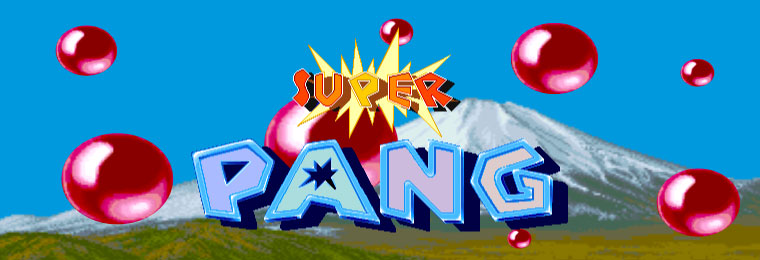
Pang and the art of popping bubbles
10 years ago
We’ll take you back to your childhood on a trip through the history of the classic arcade game Pang.
You probably remember when you used to go to the amusement arcade in the 90s to play Pang and spend all your weekend allowance there. The goal was to destroy every bubble thrown by alien invaders, which threatened several locations around the world, starting with Mount Fuji in Japan, and ending up having to save the entire world. In the US, it was known as Buster Bros., telling the story of the Buster brothers that had to travel the world to destroy the bubbles.
This year, a PC, mobile and tablet version of this japanese game will be launched. It’ll carry the name Pang Adventures, developed by the French DotEmu and Pastagames, trying to adapt one of the Arcade classics to modern devices and platforms. In fact, the small Parisian studio Pastagames is also adapting the game for PS4 and wants to launch it in 2016.
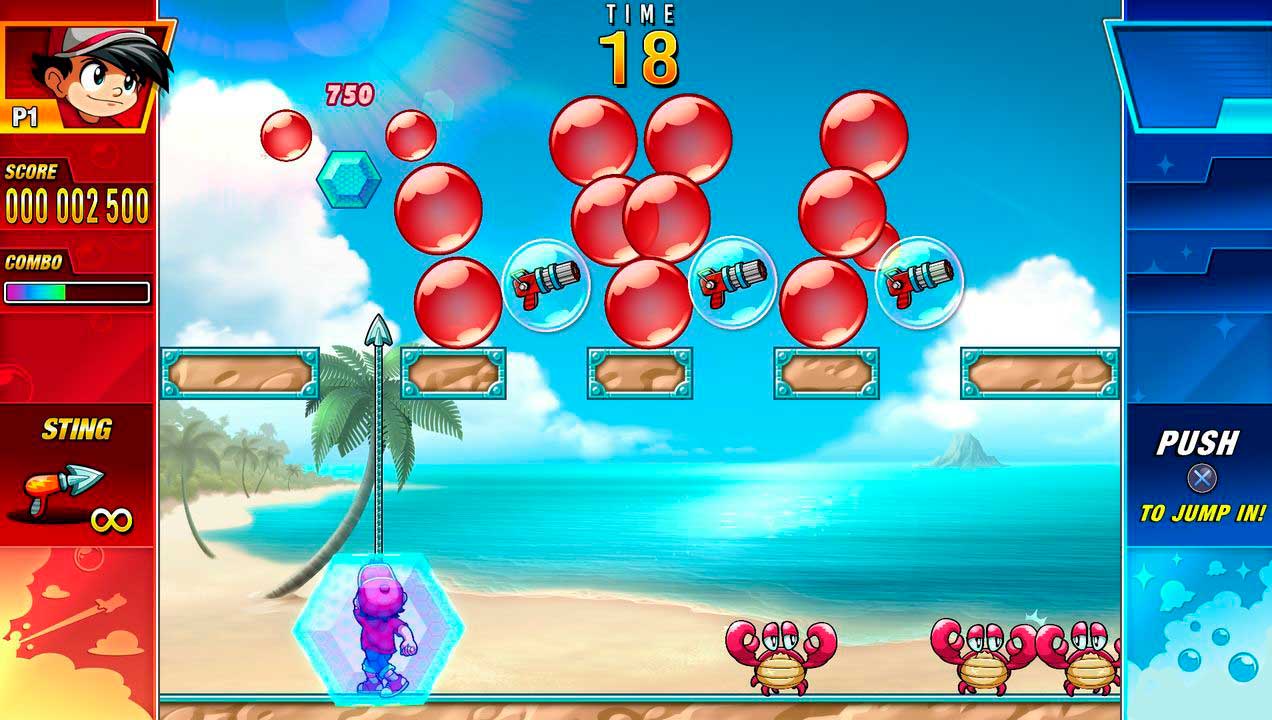
At the Paris Games Week 2015, the game could be tried out on an Arcade machine for the first time. Naddim Haddad from Pastagames explained that Pang “is an old-school game, they don’t make them like that anymore.” According to him, the classic Pang was a game that “wasn’t meant to impress, based on a simple and efficient gameplay that went straight to the point.”
On top of that, the 2015 version wants to revamp the 80s classic and adapt it to our times with weapons such as rail guns or lasers, amongst others. The bubbles will also undergo an update—they can now be burning or electrified. And as an absolute novelty, Pang Adventures will introduce several bosses, characters that never existed until this point in the Pang series.
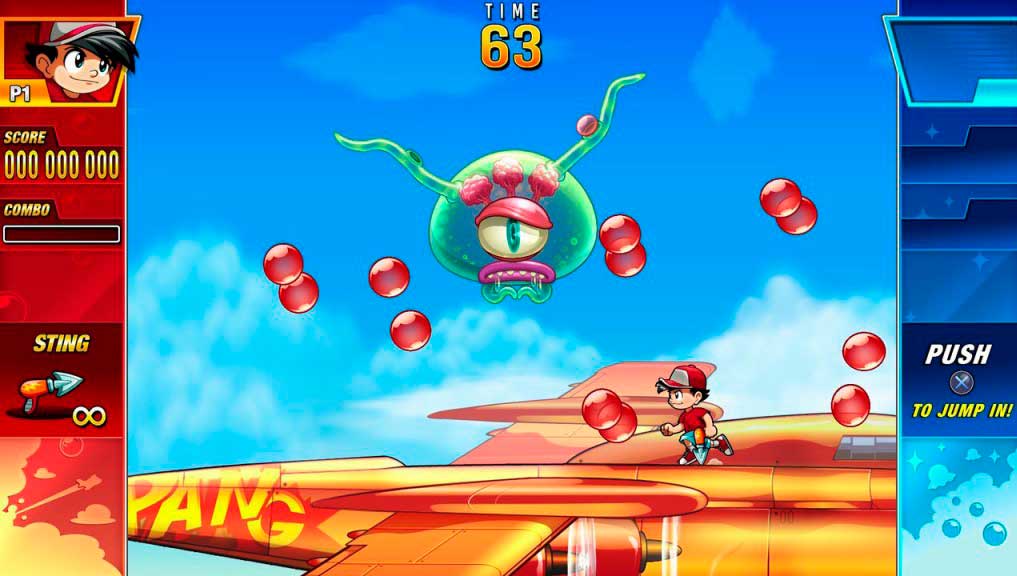
The first Pang was born in 1989, developed by the Japanese Mitchell Corporation and distributed by Capcom for Arcade machines—under the name Pomping World in Japan. It had one- or two-player modes, and was divided into 50 levels on 17 famous locations all around the world—such as Paris, London, Barcelona, Athens or New York. It also had famous monuments such as the Taj Mahal, the Mayan ruins or the Temple of the Emerald Buddha, up to Easter Island.
Later, Pang would be adapted to different platforms. In 1990, Ocean Software made a version of the game for the ZX Spectrum, Commodore 64, Amstrad CPC, Commodore Amiga and Atari ST personal computers. In all the versions of this game, you’re unable to jump, you can only move from left to right and move up or down a ladder to evade the incoming bubbles. Though, rather than evaded they need to be eliminated—but one shot isn’t enough, since they shrink and multiply themselves as you hit them. Luckily, you will get items and power-ups that’ll help you defeat them. Other than that, there are also animals that may or may not help you, a time-stopping hourglass or other more effective weapons than the harpoon.

Due to the great success in its Arcade format and on PC, it would also be adapted for Game Boy in 1993 and for PC-Engine CD. Later, it would be even made available for PlayStation and PlayStation Portable in two compilations: Super Pang Collection in 1998 and Capcom Puzzle World in 2007. Those versions had greatly improved graphics and included Pang’s successors.
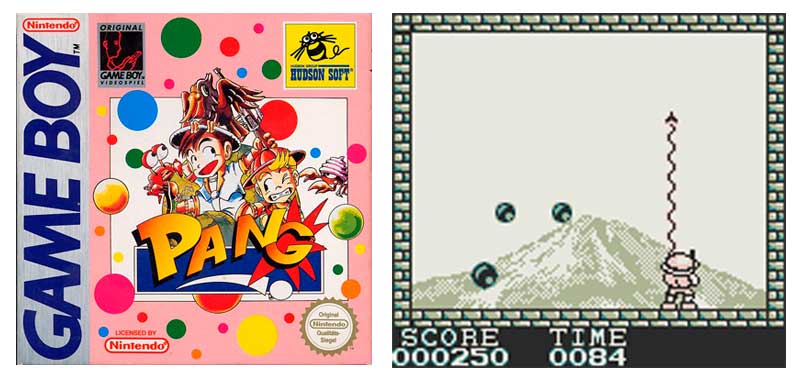
Amongst the successors of this popular game, there was Super Pang, launched only a year after Pang—in 1990. It was also released for Arcade, and later in 1992 for the Super Nintendo—with the exception that it didn’t have the two-player mode. Even though there is only a one-year gap between the games, there are remarkable changes in Super Pang. The player could choose between two different modes: Tour Mode and Panic Mode. The first had the same modus operandi than its predecessor, but with some visual improvement and changes. The second game mode was, however, completely different. It was a survival mode without ladders, platforms or animals; only a hail of bubbles and a few items that helped beat this difficulty mode that had no pause at all—unless you died, of course, then it was Game Over.
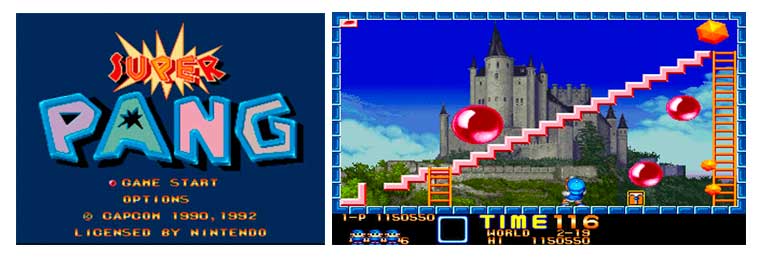
Five years later, in 1995, Pang 3 was released—known in the US as Buster Buddies—for Arcade, later also included on the PlayStation compilations. This version introduced a few changes and updates, though it was essentially the same game: exploding bubbles. The first big change was the use of pre-rendered graphics for the characters. Also, you didn’t play as the Buster Brothers of the saga; you were able to choose between four characters with different skills:
Don Tacos was a character with a mustache and a mexican hat who had a double harpoon; Pink Leopard, as the name suggests, was a pink leopard immune to dynamite, ice and enemies. Then there was also Captain Hog, a pirate with a wired hook that stuck to the ceiling and popped bubbles whenever they touched the wire; and Shiela the Thief, a thief from the 1001 Nights with the ability of shooting two wires at a 45 degree angle.

In Pang 3, the goal wasn’t to travel from city to city to save the world from the bubbles anymore. This time, there were three game modes: Beginner Mode, which served as a good training, the Normal Mode and the known Panic Mode. The game included background art, and many more platforms and ladders.

We had to wait until the year 2000 for another instalment, though: the Mighty! Pang. However, with the new Millennium, the amusement arcades could barely survive in the shade of home consoles. Since this game would be release for Arcade only, not many people would get to know it. Mighty! Pang went back to the origins of Pang and Super Pang when it came to history, graphics and playability, though it also had a very hard Expert Mode.

Finally, in 2010, Mitchell Corporation would release Pang: Magical Michael for Nintento DS, where the young Mage apprentice Michael has to travel the world to eliminate the bubbles that emerged from an experiment gone wrong. Once again, the goal is the same, though the plot is slightly different from the original one. Aside from the Tour Mode and Panic Mode, there was also the Multi Player Mode. Since it was for Nintendo DS, there was the new feature of playing on a double screen, as well as a touchscreen option in the Panic Mode Touch, unlocked after beating Panic Mode level 50. This option allowed you to direct the shooting angle while the character remained in the center of the screen. It also had wireless multiplayer battles and online rankings.

This very long career deserves a tribute, and Spritted has done its part with a game. Gun Garden has the same mechanics than Pang, but instead of defeating balls or bubbles, you have to fight an insect plague that rain from the sky and bounce and split up whenever they’re hit with the fumigator. Will you be able to get rid of all insects?
Article written by Paula Gil Alonso